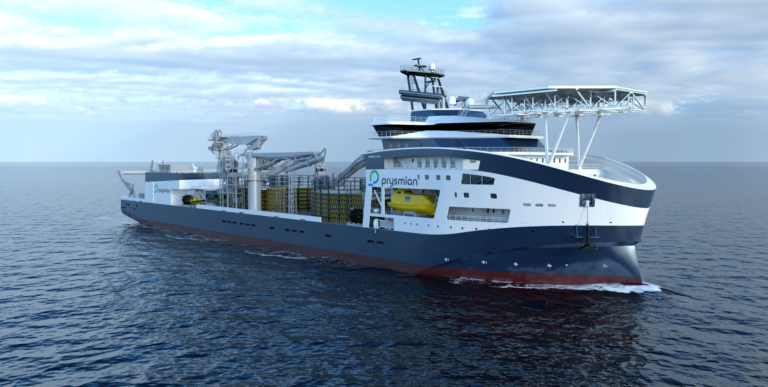Italy-based Prysmian Group is investing approximately €350 million for two new cable-laying vessels (CLVs) that it says will reinforce its submarine project execution capabilities.

The first cable-laying vessel will be an evolution of the Monna Lisa class.
With a length of approximately 185 meters and a breadth of about 34 meters, the new CLV will be equipped with advanced cable installation solutions, such as three carousels for a total capacity of 19,000 tones, positioning itself among the highest cable loading capacity vessels in the market and enabling a reduced transportation time from the factory to the site, for an overall improved project efficiency, according to the company.
A bollard pull in excess of 180 tones should allow the vessel to perform complex installation operations of simultaneous cable lay and burial (up to four cables) with a variety of ploughs. The CLV will be equipped with DP3 positioning and seakeeping systems and will be operational by the beginning of 2027.
As for Leonardo da Vinci and Monna Lisa, the new vessel will be built by the VARD Group, a subsidiary of the Fincantieri Group. The contract value amounts to approximately €230 million.
The other vessel will be the evolution of the Ulisse class, with a length of approximately 167 meters and a breadth of about 40 meters, and will be equipped with two carousels (one of them split into two concentric sections) for a total cable loading capacity of 10,000 tones.
The DP2 positioning and seakeeping systems and an eight-point mooring system should enable the ship to meet its operating requirements specialized in shallow-water cable laying and burial installation, even in harsh environmental conditions. The vessel is planned to be operational by the first half of 2025.
Both CLVs will feature high-voltage shore connection systems to power them with clean energy during loading operations, diesel generators suitable for biodiesel blends, and battery hybrid systems only for the deep-water-vessel, due to its specific activity, said the Italian company.
“The market is tremendously growing, and we are facing an increasing demand for submarine cable systems for interconnections and offshore wind farm projects both in Europe and in the US,” said Hakan Ozmen, EVP Projects BU, Prysmian Group.
Prysmian’s current fleet is composed of six CLVs: Giulio Verne; Cable Enterprise, a DP2 vessel mainly used for the installation of offshore wind farm export cables; Ulisse, a barge for shallow-water installation; Barbarossa, a small barge designed for operations in very shallow water and intertidal zones; Leonardo da Vinci and Monna Lisa (the latter still under construction), used for installation of long HVDC interconnections and in very deep water environment.


